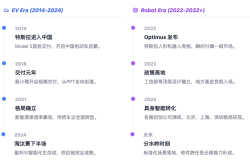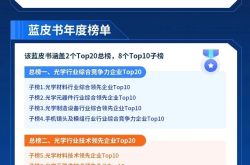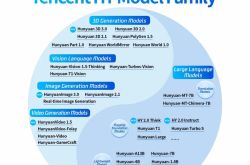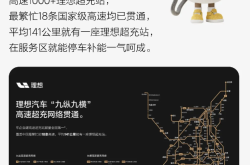Advancing the Commercialization of 5G Network Slicing: Insights from Google Fiber's Demonstration
![]() 07/17 2025
07/17 2025
![]() 636
636
Recently, Google Fiber and Nokia have collaborated to showcase network slicing in home broadband applications, dramatically reducing gaming latency from 90 milliseconds to 10 milliseconds between two gaming consoles. As a cornerstone of 5G technology, network slicing has been successfully transplanted to fiber optic networks through the addition of proxy programs to routers and pairing with Nokia's slicing-enabled optical line terminals. This demonstrates that network slicing can effectively support a variety of scenarios, despite 5G's commercialization falling short of expectations in this area. To fully realize its potential, more market entities must actively promote this innovative 5G technology across diverse scenarios.
Multiple entities are focusing on network slicing applications, leading to the emergence of diversified business models. Google's demonstration in home broadband offers ultra-low latency for gamers, while Google Fiber executives also propose exploring network security applications, such as automatically triggering a "transaction slice" for secure banking transactions. Additionally, Google is studying the promotion of slice support for AR and VR live streaming. Another American cable TV provider, Comcast, has initiated a network slicing trial, deploying low-latency technology on its network and planning to extend it to fiber-to-the-premises (FTTP) networks, reducing latency by 75%. Initial support includes FaceTime on all Apple devices, Meta mixed reality headset applications, NVIDIA GeForce Now cloud gaming, and multiple Steam platform games.
Fixed broadband providers are intensifying their experimental demonstrations of network slicing, extending its reach beyond the wireless domain and exploring new scenario possibilities. Leading enterprises across various industries view network slicing as a crucial tool for enhancing digital capabilities. Early adopters have already deployed and commercialized network slicing, leading to the implementation of new business models. A notable example is Siemens' partnership with German operator O2 Telefónica in April 2023 to develop 5G network slicing-based solutions. In this collaboration, Siemens serves as the customer relationship leader, selling O2 Telefónica's public 5G network slices to German water and sewage treatment companies as part of a new managed industrial automation solution.
Since the early commercialization of 5G, network slicing has been anticipated as a new growth area for operators, with intense discussions around its business models. Theoretically, 5G network slicing encompasses several business models: B2B, B2C, B2B2B, and B2B2C. The industry has continued to explore these models in recent years.
In the B2B model, operators directly deploy 5G slices for industry customers, similar to current virtual private network deployments. Conversely, the B2B2B model requires a powerful entity with a broad industry customer base and expertise in communication products to resell operators' 5G slices and integrate them into overall digital solutions. The Siemens-O2 Telefónica collaboration provides network slicing services, exemplifying the B2B2B model. Here, O2 Telefónica supplies the 5G slices, while Siemens acts as the reseller, targeting end customers like water industry enterprises.
Google Fiber's current demonstration using network slicing could pave the way for a B2C business model in the broadband sector. Google Fiber can enhance its broadband service capabilities as a network slicing user and sell slicing capabilities to users in need, such as gamers and financial users.
However, due to insufficient support from smartphone terminals in terms of chips, operating systems, etc., individual users find it difficult to subscribe to network slicing on their phones. Consequently, the B2C and B2B2C models have yet to gain significant traction. Nevertheless, if network slicing can be effectively implemented on smartphones and attract a large consumer base, it will significantly amplify its commercial value.
While technical barriers in the consumer sector for network slicing continue to be broken, deployment remains slow. To achieve a breakthrough, network slicing must overcome barriers in smartphones by integrating slicing capability components. This can be achieved through matching service attributes with network slicing in the modem or at the operating system level. Both Android and iOS have provided support for network slicing, and mainstream chip manufacturers have implemented slicing functions in modems.
These breakthroughs enable smartphones to support 5G network slicing, opening up rich application scenarios and providing a platform for innovation. From a business model perspective, both the B2C model, where individual consumers subscribe to slices directly from operators for specific apps, and the B2B2C model, where enterprises wholesale slices from operators and provide them to their users, present new opportunities for various market entities and expand the 5G consumer application market.
Benefits of 5G Network Slicing on Smartphones:
For Users: They can directly experience the improvements brought by 5G native technology. By subscribing to slices, users can enjoy exclusive bandwidth, security, and low-latency network services, making 5G's advantages over 4G more apparent.
For Internet Product Providers: Network slicing drives more business and scenario innovations. With exclusive and high-quality network services, mobile internet application enterprises can leverage network slicing to develop more engaging and diverse businesses and scenarios.
For Service Industries: Network slicing offers a new means for enterprises to enhance customer service. By providing dedicated communication services to high-end customers, service enterprises can further upgrade their service experience based on the mobile internet.
For Operators: They can design premium products to achieve revenue growth. With network slicing, operators can offer tiered services with tiered pricing, increasing ARPU values as more users subscribe to higher-tier tariffs.
Overall, enabling 5G network slicing on smartphones provides a potential upgrade direction for various economic forms based on smartphones, significantly expanding the mobile internet consumer market. However, realizing network slicing on smartphones requires overcoming technical and ecological barriers, necessitating comprehensive coordination from all parties in the ecosystem.
According to a 2024 survey of 105 global operators by Heavy Reading, 33% of respondents indicated they were conducting network slicing trials, while only 7% had begun deploying first use cases. Deploying end-to-end network slicing is complex and resource-intensive. Nevertheless, with slicing in the B2B sector taking shape, it is expected that ecosystem parties will accelerate their consensus on the value of network slicing and jointly promote its rapid implementation, especially to facilitate large-scale adoption in the consumer sector.







